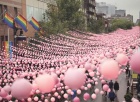Luba Diduch and Fay Stevens bring together distant treescapes through a series of observations, dialogues, and interventions. Both sites feature a tree/trees located within a circular architectural structure: the Heritage Tree in Calgary, and the Circus in Bath, UK. The two trees are surrounded by constructed circles—circles that enclose and create a particular circularity of space in which the trees dwell. As they walk around the two respective trees—echoing the circles that are articulated by similar circular stone constructions—they record sounds, images, and thoughts. They walk not only as a method for observing and recording, but also a ritual or performance in dialogue with the trees.
The Heritage Tree
I think the tree is an element of regeneration which in itself is a concept of time. Trees have always been a form of sculpture, a symbol for this planet ever since the Druids. The Druids used their trees to define their holy places. I can see such a use for the future... —Joseph Beuys in conversation with Richard Demarco, 19821
A ‘tree’ can be thought of in general terms, as a universal symbol as well as in the manner in which it has been interpreted in other instances—artistically, socially and ritualistically. Joseph Beuys, in his 1982 project 7000 Oaks for documenta 7, initiated the planting of 7000 trees in Kettel, Germany.
The trunk of Calgary’s Heritage Tree is rooted in gravel and concrete as it stands in the middle of a parking lot, surrounded by a stone circle. The circle around the tree was originally installed with the intention of creating a ‘protection zone’ in order to create better soil conditions for its preservation. The tree stands out from the urban landscape and harbours a natural ecosystem that includes the presence of birds, prairie dogs, and small plants. Rising out of its broad trunk, its branches arch and lift to the sky, the spaces that exist above and around its branches doors opening up to wondrous and imaginary worlds of interpretation.
"Rilke wrote: 'These trees are magnificent, but even more magnificent is the sublime and moving space between them, as though with their growth it too increased.'"4
The Circus
Round monuments have often been built with some connection to the cosmos in mind. Stonehenge, for example, was aligned so as to capture the sun on the longest and shortest days of the year. With Stonehenge, we see an extraordinary circular interplay taking place, a recognition of a circle (the sun), within a series of monumental circles (the henge), within a circle (the earth). Georgian architect John Wood the Elder is said to have emulated Stonehenge with his symbolic Palladian architectural vision of the Circus in Bath, UK. This piece of Georgian architecture in the round has, over time, had the inclusion of five large plane trees growing at its centre.
The question of ‘being’ in a forest, or in this case, in relation to trees within an urban context. Collected images and sounds have been situated within a particular season in the trees’ process of regeneration (early spring) which is in itself centres the artwork in a particular period of time. In Martin Heidegger’s The Question of Being, he speaks of ‘states of being’ and how human beings cannot be taken into account except in relation to the world and things that exist around them.6 With this in mind, I realize that any sense of ‘being’ and the artwork itself intensifies through documentation of the subject—the trees and their surroundings.
Sensory perception is the ability to receive sensory input and, through various physiological processes in the body, translate the stimulus or data into meaningful information. The perceptions of sound, physical sensations—those felt through wind, rain and snow—as well fragrance—the promise of a heralding spring season—deepen the experience of interacting trees. The haptic qualities of trees—bark, branches, leaves, roots, ambient movement with the wind, seasonal manifestations—have a corporeal presence that in some way interfaces with the corporeality of the human body. Over time, the hours spent making recordings and documentation for this work, the distinction between the tree and human sense becomes elementally and corporally entwined. Visible and mobile, my body is a thing among things; it's caught in the fabric of the world, and its cohesion is that of a thing. But, because it moves itself and sees, it holds things in a circle around itself. —Maurice Merleau-Ponty, Phenomenology of Perception, 1945
|
In July 2017, Diduch and Stevens will continue The Language of Trees simultaneously in two forests: in residence at the Banff National Park (Canada) for Diduch and The New Forest (UK) for Stevens.






